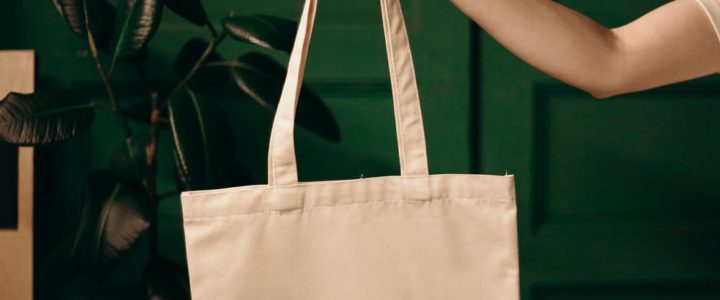
It’s been a while since I’ve banged on about personal care and more sustainable choices in our normal every days lives. So here’s an update for you! Tried and tested products which I’ve been using as alternatives to non-sustainable versions. Let’s just quickly reiterate that not buying something new just because it’s sustainable is the most sustainable thing you can do. These items replace things you genuinely need to continuously buy/use anyway, so go sustainable!
Pearly Whites
I’ve been using Toothy Tabs from LUSH over the past few months. And I’m a fan! There are plenty of flavors to choose from for every taste. My personal fave is the brand new Toothy Fruity (see what they did there?) and my 5 year old daughter even likes 2 of the color; and my second favorite is Miles of Smiles (which my daughter didn’t like!). I wasn’t especially keen on Dirty and I did not like Boom – far too powdery for me. I know there are H-E-A-P-S of other companies who produce little tabs of tooth cleaning foaminess, like Georganics (who also do a non-tablet powder); ChewTabs; and Bite.
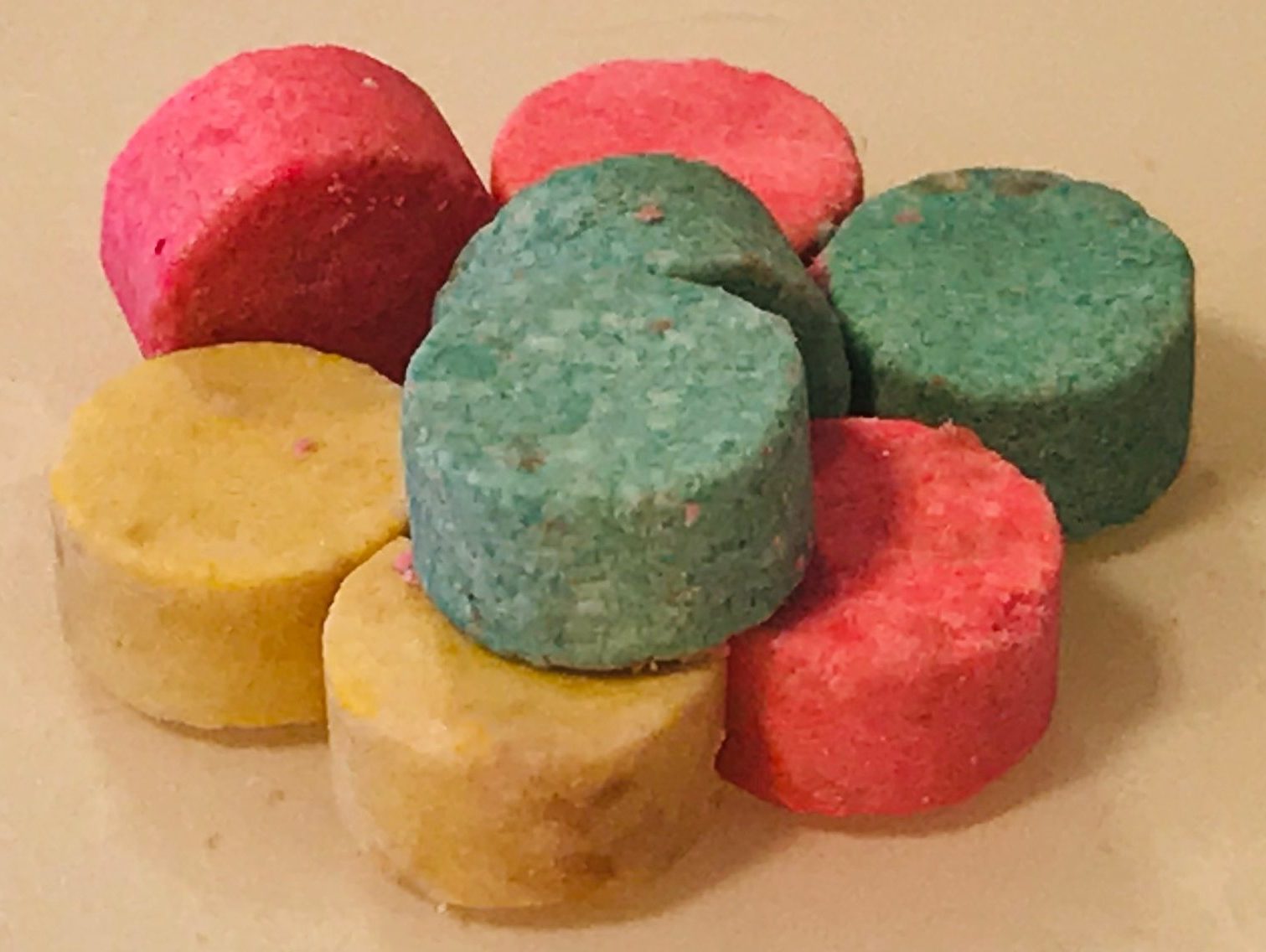
Let me address the elephant in the room: yes, LUSH Toothy Tabs come in a plastic bottle. But it’s 100% post-consumer recycled plastic and can be recycled again (or reused of course). I don’t personally know the reason they choose this bottle, but I do know that transporting these will be less expensive and require less energy (therefore less carbon emissions) than transporting glass due to plastic being lighter. Does that make it the best decision? Possibly not. But it’s not the worst decision either. The other thing is that I buy these in store, when I’m at the mall for groceries, so I expect that decreases the overall negative footprint from the plastic. As ya’ll know, this sustainable living piece is often about trying to achieve a balance, if you think about your carbon emissions ‘savings’ Vs ‘spending’. But the other 3 companies I’ve mentioned use glass or aluminum jars, which of course can also be reused (or recycled infinitely), and all 4 companies use zero plastic in distributing their goods (two use compostable bags).
Although some of these products are more expensive than their traditional counterpart, in my experience you get more bang for your buck. In fact, I’ve been using only half a tablet each time, and my teeth are shiny and white for half the price! And obviously, in my opinion, ditching the old toothpaste tube is a win which makes it worth it. And then there’s the complete absence of risk of the tube being squeezed and squirted all over everything in your suitcase!
Shampoo (& Conditioner) Bars
I’m a complete convert to these little bad boys! I’ve tried Seanik and Montalbano from LUSH (no, this is not a paid advertorial!), of which Seanik worked best for me (fine, limp hair with a penchant for oily roots). I’ve also used Sweet and Spicy from Ethique, and my husband has been using Tip to Toe (doubles as a shaving foam!). Overall, my vote would go to Sweet and Spicy for longevity of the bar and Seanik for the feel of my hair. So I’m still trying to find the perfect bar – next will be St Clements from Ethique to try to get the oil under control.
What’s so great? Well they are 100% plastic free. Ethique bars come in boxes which are recyclable and LUSH hand the over (in store) wrapped in paper, which again can be recycled (but remove the sticker first).
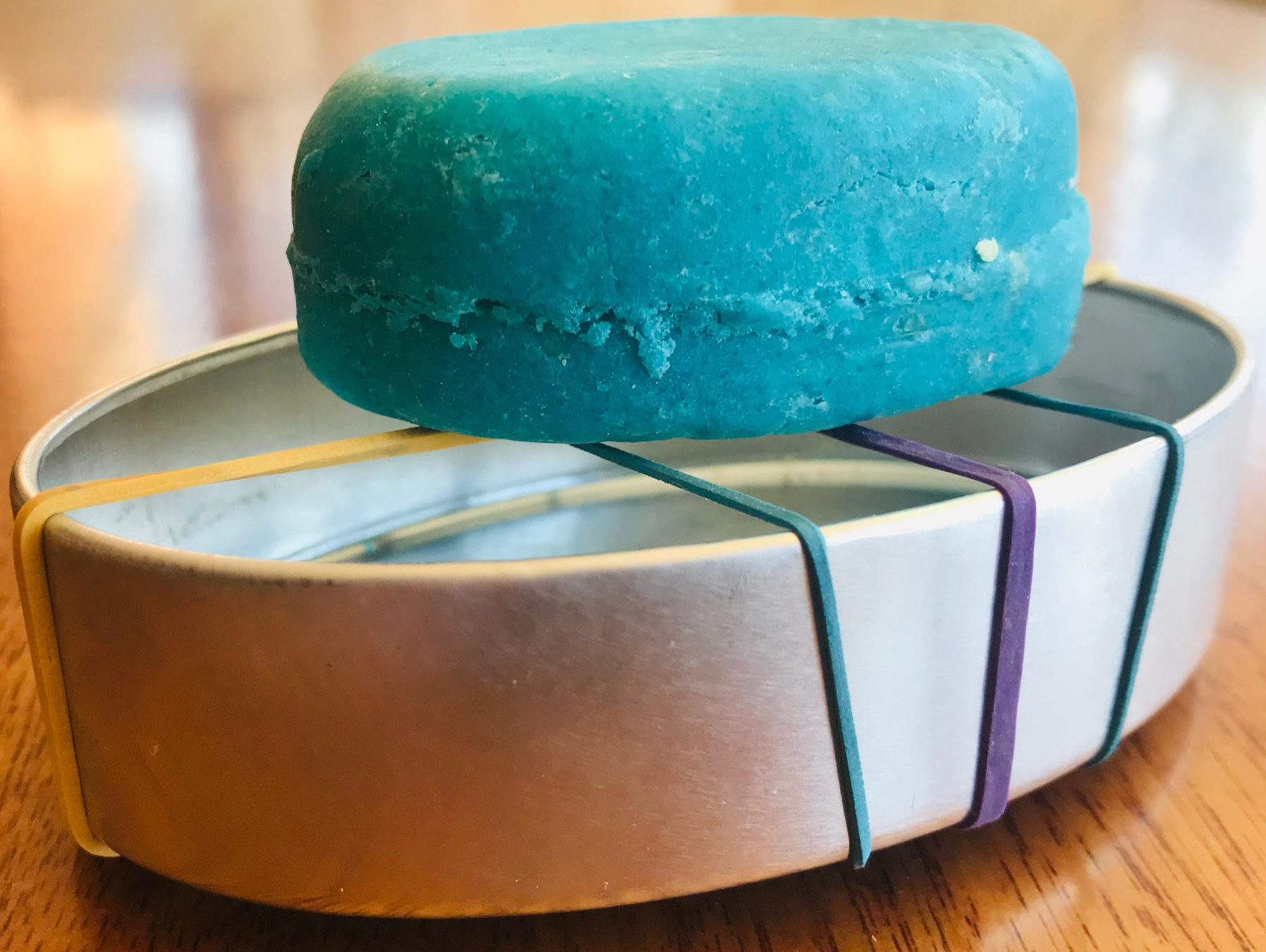
They are, like the tooth tabs, slightly more expensive than bottles of shampoo (unless you usually buy salon products, in which case they’re a steal!), but they should last longer than a bottle. This is for two reasons – more active product jammed into the block and you’ve got more control over the ‘dispensing’ of it. But here’s a few hot tip to make them last even longer: wrap them in cotton and stick them in a drawer for 24 hours to really get all excess moisture out (I know they’ll feel dry already, but just trust me); cut them into smaller blocks and take one piece at a time into the shower; and make sure you’re allowing them to drain off after use, by using a dish with rails or a rack – or create a DIY rack: a lid, jar or tin with elastic bands wrapped round it to keep the bar lifted off the surface.
Now regarding conditioners, I didn’t like Sugar Daddy-O from LUSH (told you this wasn’t an ad), but I did like WonderBar from Ethique. Obviously, all hair is different, so it will take some time to experiment with different products, but I think it’s worth doing. Oh, and if you purchase any bar (shampoo, conditioner, soap, moisturizer etc) from LUSH but it’s just not working for you, take back the unused portion, and you can exchange it for something different. The unused section goes to a staff member or to be used as a tester. I’m impressed with this!
And while you’re on a roll, ditch the shower/bath gel, liquid face wash and liquid hand soaps in preference of bars too…my bathroom now captures he essence of the good ol’ days!
Zero plastic period
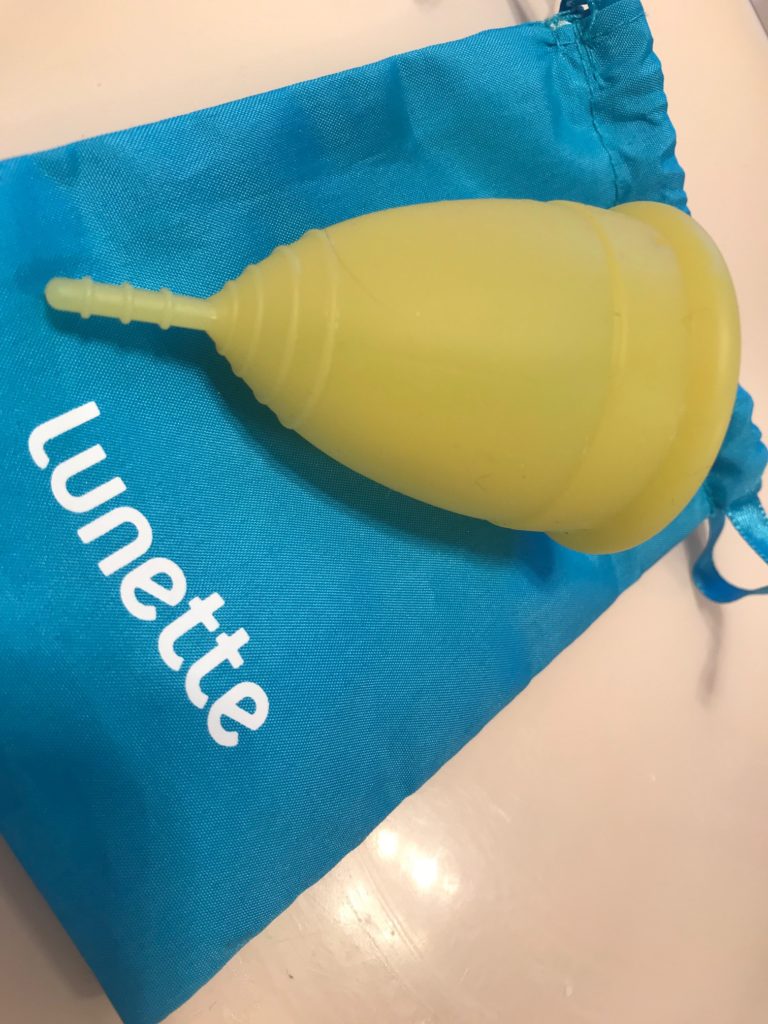
I switched to a menstrual cup (also known as moon cup) about 8 cycles ago. And I only wish I’d done it sooner. WARNING: explicit content coming up! So skip on to the next swap if this one doesn’t pertain to you. OK – you’ve been warned:- So these are literal cup shaped pieces of medical-grade silicone, free from BPA and latex. There’s usually a small tag from the base, for the removal. And look, while we’re on this, I won’t lie, the insertion and removal was absolutely quite tricky at first – the first removal actually had me thinking what a terrible mistake I’d made and I wanted to know how bad it would be if it just stayed in place forever. Aaaaannd, the whole day prior to this removal debacle, it had been rather uncomfortable. But…I cast my mind back to my first experience with tampons…it was no walk in the park either! So I persevered the next day, and it was a little better. And the day after that, better still. Fast forward 8 cycles and it’s easy peasy! When you feel like it may be filling up, or at least every 8 hours, whichever comes first, you need to remove this little cup and empty the contents. This can be down the toilet, or if you’re inclined, and at home, into a receptacle for dilution with water and use on your garden.
Depending on the brand you can get a little carry bag or case, so you’re prepared (with dignity) in the lead up to day 1. And there’s an abundance of choice of brand, color, shape and size. But please don’t opt for super cheap, unknown brand, as you do need to think of safety. Similarly to everything we’ve discussed thus far, there’s an element of try-it-and-see in regards to size and subsequent fit. With a healthy dose of research of course! I went with the Lunette, and as I’ve had children, size 2. I was incredibly unsure of the size, because although there’s the child aspect, I have a shortened cervix so I honestly expected to have to do a bit of trial and error with brands and shape. But I got lucky! I’ve since also purchased a Moxi, in size Super (they could work on this label, tbh!), and this isn’t as good, based on experiencing slightly more leakage. Huh?? I hear you gasp! Leaks? Yes, maybe. They should seal very nicely internally, but (again with the frank honesty) on my day 1 and 2 I often still get a small amount of leakage.
With good care, menstrual cups can last for years and years! So what does ‘good care’ entail? Make sure you check with the manufacturer for specific instructions, but for a quick, generic overview: rinse with cold water between each removal and reinsertion; don’t use oily or fragranced soaps as this can start to degrade the silicone; and prior to first use and between each cycle, boil it in water for at least 10 mins (although some brands come with a container able to be microwaved). They can remain insitu for 8 hours, depending on how heavily you bleed. And for the final ‘sale’ pitch on these things….waste and money. The average woman will dispose of in the region of 11,000 pads/tampons, equivalent to approximately 120 kg (265 lbs), in her menstruating life!! But with these, there’s no waste. There’s no plastic wrap, there’s no plastic involved what. so. ever. And on the financial side, I have saved so much money since swapping over from disposable pads and tampons! The initial outlay is of course much more than disposable items, but it’s ONE outlay, not every month. I recouped my expense in just 3 months!
Out, Damned Spot!
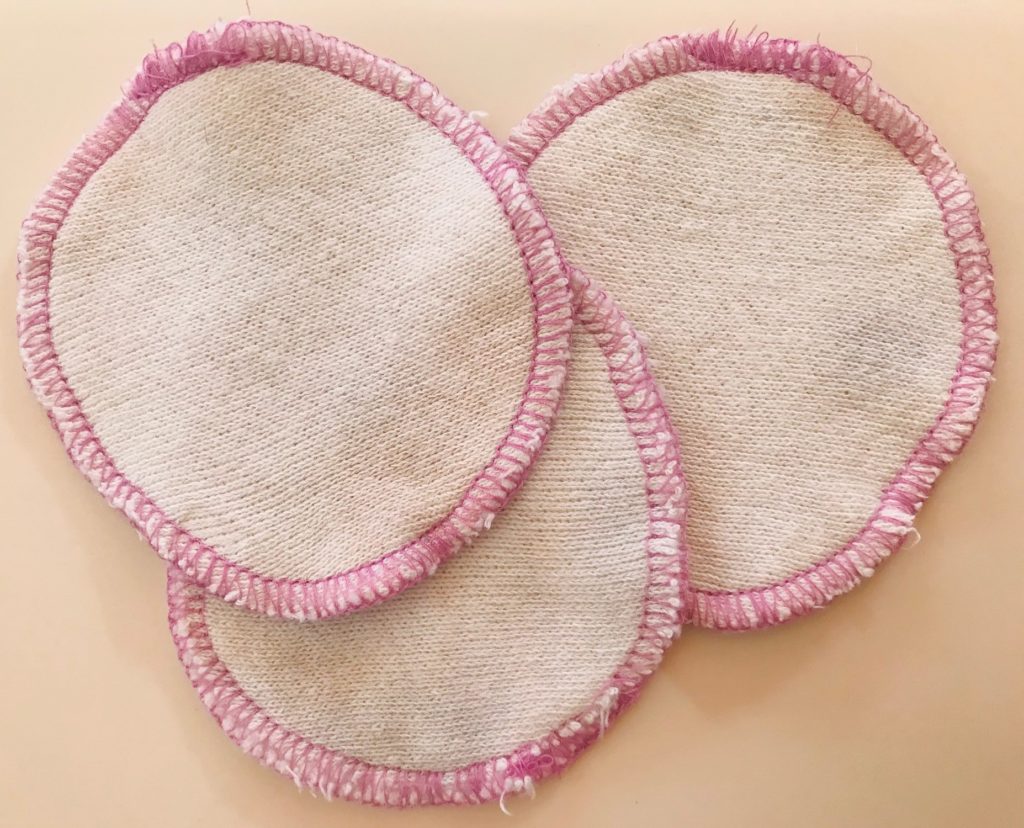
Cotton rounds, or pads, are very effective at removing makeup – but rubbish for the planet. So I’ve been using reusable makeup remover pads for the last 12 months. They are easy to use, easy to care for, and zero waste! I started using the handmade cotton pads for my whole face, but the ones I chose were slightly less then soft and fluffy. I’ve stuck with them, but have learned to use somewhat less pressure on my face, and have purchased 2 very soft bamboo pads for my eye makeup removal. I’m a complete convert, and it’s another swap I wish I’d discovered years ago!
I give them a rudimentary wash with warm water and normal hand soap after about 3 uses, and then pop them into a mesh ‘delicates’ wash bag to go through the cold machine wash. I don’t need to use any stain remover, and they’re white – even 98% of the mascara coloring washes out. And on that, I use waterproof mascara but have no issue with them removing it nicely with eye makeup remover liquid. Need another bonus – saving money once more!
Caffeine addict, anyone?
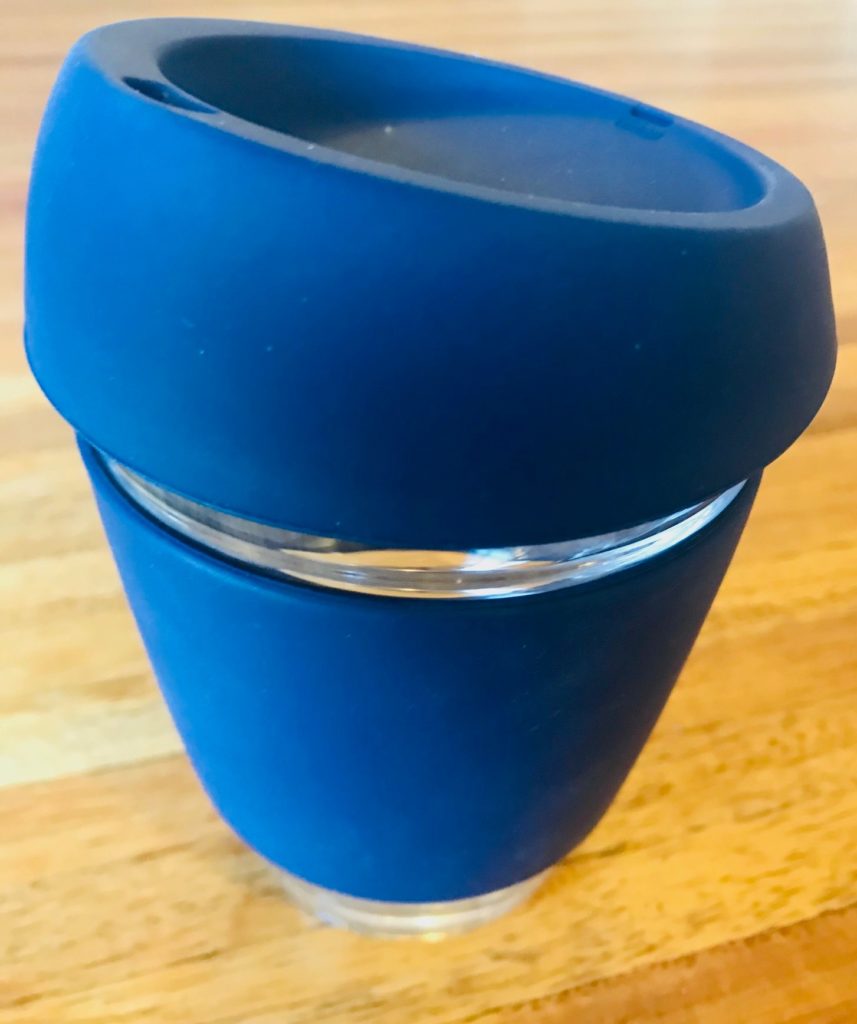
So this was my second ever sustainable swap. And in my mind, a no-brainer. For anyone who ever has a takeaway coffee, I honestly see a reusable coffee cup as an absolute must. Takeaway coffee cups are landfill. To the tune of 2.25 BILLION of them. Every. Single. Day. Or 500 billion per year! All over the world. They are, at this stage, only recyclable in theory. This is based on the fact that they are lined with polyethylene, ie., plastic – otherwise the paper wouldn’t hold a beverage. And this material is a recognized contaminant in recycling facilities. So the process of detaching the paper and plastic is rather tricky, and very expensive. So in short – doesn’t happen. Those disposable cups which you might pop into the recycling bin will either just be separated and head to landfill, or contaminate a whole batch of otherwise genuinely recyclable material, and it ALL ends up in landfill.
What about compostable? Well, a step in the right direction. How-ever…most of these require specialist commercial composting facilities, not your home based system. So in the meantime, there’s stacks of confusion about which cup is which (because let’s be honest, some labelling on the cups is less than transparent) and where it can be disposed of. And then there’s the lids. Mostly unrecyclable due to the crisp and brittle plastic used, and they can clog the machines. But again, some are allegedly ‘compostable’. So, that’s all as clear your hot long black, right?
Well in that case, let’s chat reusable. You have a huge choice of brands, simply too many to list, materials and sizes – whether you go for espresso pure and simple or double shot tall almond milk latte. If you caught my earlier piece on bamboo cups, you might want to skip those. But that still leaves BPA free plastic, silicone, glass, stainless steel or ceramic. With a choice of lid style and material too! There are literally endless design choices too. AND if you choose your caffeine dealer carefully, you can find one who gives you a discount for your BYO cup! They understand that you’re saving them the money of a disposable cup as well as encouraging you to help save the planet. And this means that once again you can recoup the outlay for your sustainable purchase.
Bottle It!
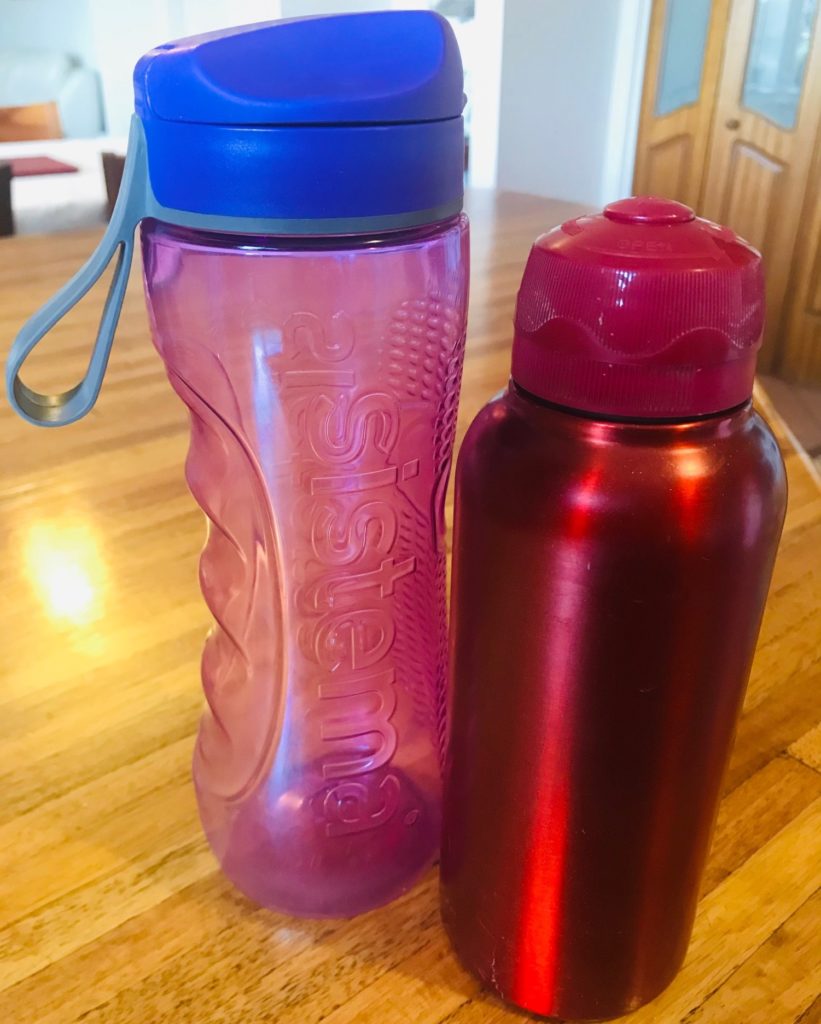
This is an old one, but certainly bears repeating. Now let me hasten to add I do acknowledge that there are places in the world which have non-potable, or unsafe to drink, water. But I’m talking about people choosing to buy bottled water in New York City or Australia. And in America, the popularity of bottled water continues to rise, despite this oft-repeated message of avoiding the single use bottle. Even in terms of cost, I don’t fully understand this one. In 2018 in the United States, $18 billion was spent on bottled water! And that’s where, on average, one gallon of water from the tap will only cost about $0.004, while the same volume of bottled water will set you back about $7.50 (based on several single use bottles being required to obtain that quantity). That’s more expensive then gasoline.
While we’re on fossil fuels – it’s not just about the waste with this product: 17 million barrels of oil are required annually to produce those bottles. And if you think you prefer the taste, maybe think again – a 2018 study found that 64% of bottled water being sold was in fact derived from the tap!
So as much as this might seem a basic thing to many of you, to stop buying bottled water, it’s clear that there’s still not enough talk about it. So I implore you, with Thanksgiving and the Festive Season just round the corner (oh yes, that’s right…2020 is almost Oh-Vah!), grab some bottles and give the sustainable gift that keeps on giving! There are literally thousands of reusable water bottle styles, designs, materials and sizes available, so you should be easily able to find something to suit everyone – friends, family, neighbors, colleagues, people on the street who see buying a bottle of water…read on to learn there’s literally no occasion not appropriate to gift one. And for yourself, I recommend two – one for your place of work or car and the other at home, ready to throw into you bag whenever you leave the house.
It’s a wrap!
I was crushing on bees wax wraps loooong before they found their way into my kitchen. What was the hesitation? Well, this is definitely one swap where the initial outlay was much bigger than the unsustainable, grocery store bought option – so I baulked. I’m not ashamed of that. Then, my amazing husband came to the rescue when he bought me a set as an anniversary gift. Swoon! I’m honestly not being sarcastic – this man is on board with our sustainable lifestyle journey, so I was grateful for this thoughtfulness. (I gave him a copper water bottle for our 7th Wedding Anniversary [symbolized by copper]…oh yes, we ooze romance). Anyway, they really are as great to use as you might imagine. I have never for a second missed the obligatory fight with the cling film as it clings only to itself or your arm from static, and then you finally get it in place to find you cut the piece a quarter inch too short….ugh!
I have also used the silicone stretchy covers, and they too are a great alternative to plastic wrap. The benefit of bees wax (or the vegan versions, with zero bees wax used) is that you can cover pieces of fruits and veg as well as dishes, plates and bowls.
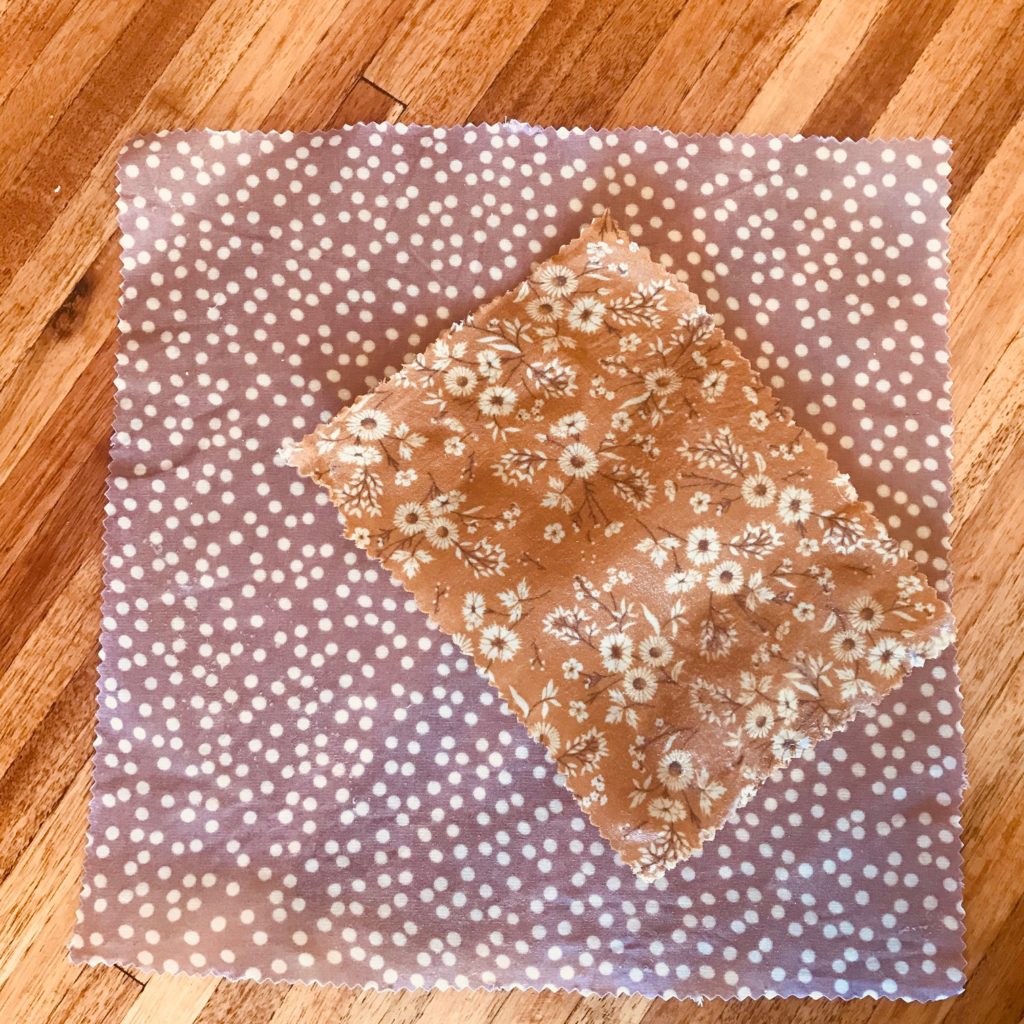
Here’s another piece of embarrassing honesty….I tried making some bees wax wraps. Because I wanted more, but (still) baulked at the cost. So I bought the fabric, bees wax block, resin and vegetable based oil, and off I went! What a cool lockdown DIY project to do with my 5 year old!!
Weeeellllllll, as it turns out, any wraps you find at markets or online or anywhere, offer quite exceptional value for money. Don’t hesitate, buy them pre-made.
I’m sure that some of this information and advice wasn’t news to you. But hopefully these insights into my personal experiences with sustainable swaps will bolster your confidence to try more of them. We would love to know the successes (and just the attempts!) in the comments section. As we like to reiterate here in the Hive, this is a journey to a new and better future on the Earth. And not everyone can tackle every part of their life to give it a sustainability revamp, let alone all at once. So meet people where they’re at, offer gentle advice and your personal experiences, find the key point which will make them think it’s a good idea (this might not be related to plastic waste or the environment at all, but may be cost based), and support them through. Judgy McJudgerson never convinced anyone to try anything new.




